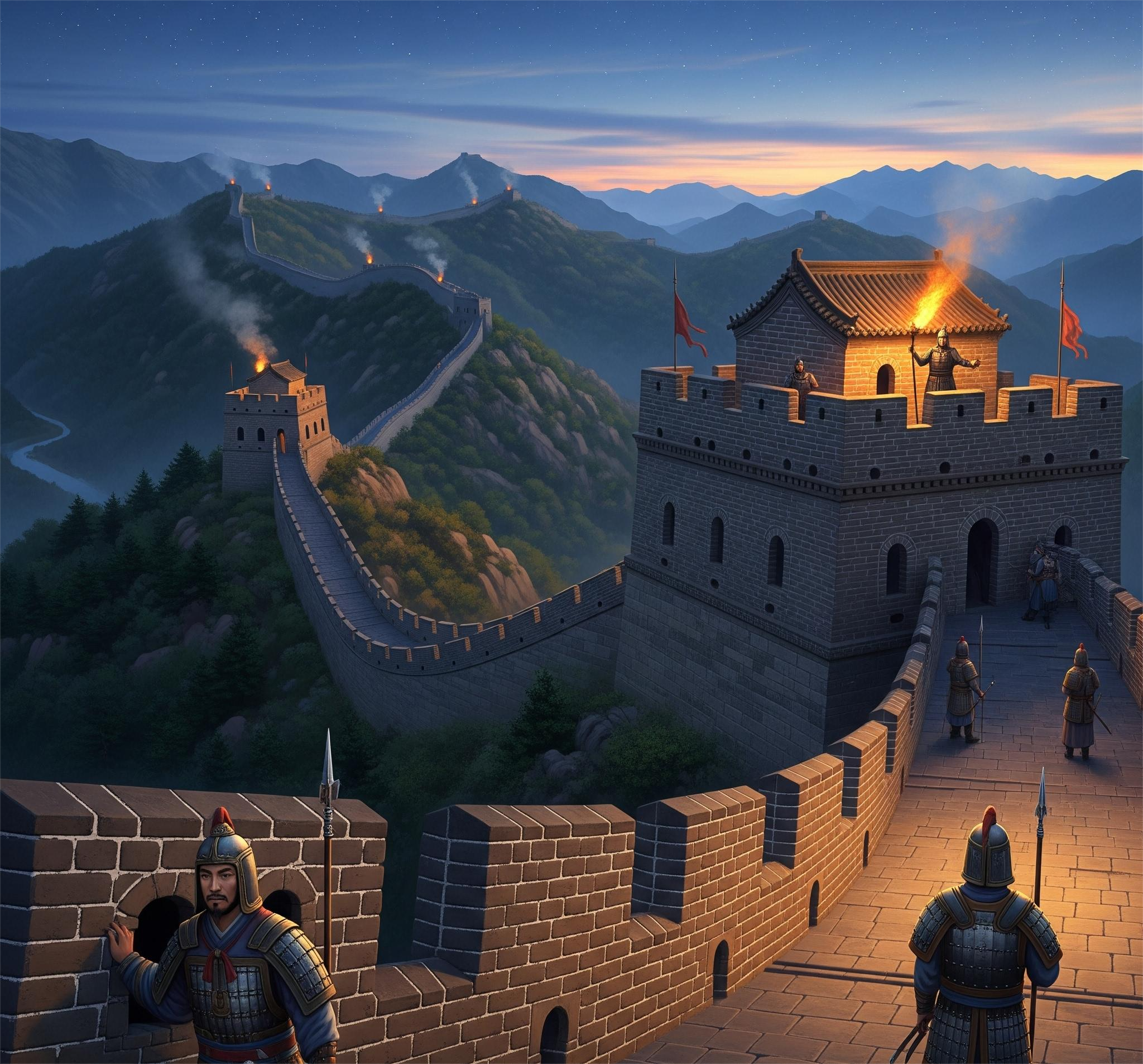One of the most iconic structures in human history, the Great Wall of China stretches across mountains, deserts, and grasslands for over 21,000 kilometers. While often romanticized as a symbol of ancient Chinese ingenuity, its primary role was starkly pragmatic: military defense. Built over centuries, the Wall served as a barrier against nomadic invasions, a platform for communication and surveillance, and a powerful tool of psychological warfare.
Origins: More Than One Wall
Contrary to popular belief, the Great Wall is not a single continuous structure. It is a collection of walls, fortifications, and watchtowers built by different dynasties over 2,000 years.
Early Walls (7th–3rd centuries BCE): Regional kingdoms in the Warring States period constructed defensive walls to protect their territories.
Qin Dynasty (221–206 BCE): After unifying China, Emperor Qin Shi Huang connected several walls to fend off the Xiongnu, nomadic tribes from the north.
Han Dynasty (206 BCE–220 CE): Expanded and fortified the wall to protect Silk Road trade routes.
Ming Dynasty (1368–1644): Constructed the most well-preserved and famous sections of the Wall in response to frequent Mongol raids.
Strategic Military Functions
1. Physical Barrier
The Wall acted as a massive obstacle to slow down or prevent invasions by cavalry-based nomadic groups like the Xiongnu, Mongols, and Manchus.
Its height, thickness, and treacherous terrain placement made large-scale breaches difficult.
2. Watchtowers and Signal Systems
Beacon towers were used to relay messages through smoke signals, flags, or fire.
This early warning system could transmit information across hundreds of kilometers in hours.
Communication enabled rapid troop mobilization in response to threats.
3. Garrison Posts and Fortresses
Forts and barracks along the Wall housed soldiers ready to defend or patrol.
Some sections were reinforced with moats, trenches, and double walls to trap and defeat invaders.
4. Psychological Warfare
The Wall projected a sense of strength and imperial authority.
For nomadic tribes, it was not just a physical obstacle, but a symbol of Chinese resilience and centralized power.
Beyond Defense: Political and Cultural Role
The Wall also regulated migration and trade, controlling entry points and collecting taxes.
It marked the boundary between “civilized” China and the “barbarian” north, reinforcing cultural divisions and political propaganda.
Over time, the Wall came to represent national identity and unity.
Did It Work?
The Wall’s effectiveness varied:
It was successful in slowing raids and deterring small-scale incursions.
However, determined enemies like the Mongols (Yuan Dynasty) and Manchus (Qing Dynasty) eventually breached or bypassed the Wall—often through bribery, betrayal, or by attacking weak points.
Still, the Wall bought time, allowed for strategic responses, and served as a logistical backbone for border defense.
Legacy
Today, the Great Wall stands as a UNESCO World Heritage Site and a symbol of China’s long-standing desire for security, order, and unity. Its stones whisper tales of sentinels, emperors, and invaders. Though empires have risen and fallen, the Wall remains—testament to a civilization’s determination to guard its heartland against the unknown.
“He who does not reach the Great Wall is not a true man.” – Mao Zedong
A statement not only of endurance, but of the enduring legacy of one of the world's most extraordinary military achievements.







